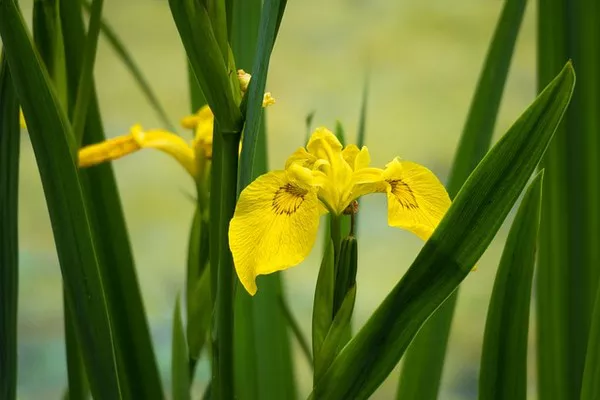Asiatic lilies are a captivating addition to any garden, boasting vibrant colors and exquisite blooms that enhance the visual appeal of outdoor spaces. These perennial plants are cherished not only for their beauty but also for their ease of cultivation. However, once the splendid flowering display comes to an end, proper care is essential to ensure the health of the plant and the success of future blooms. In this article, we will explore the steps to take when Asiatic lilies have finished flowering, guiding gardeners through post-bloom care and setting the stage for continued growth and beauty.
1. Deadheading and Pruning
Asiatic lilies, like many flowering plants, benefit from deadheading – the removal of spent flowers. Deadheading serves two primary purposes: it improves the overall aesthetics of the plant and encourages energy to be directed towards future flower production rather than seed formation. Once the blossoms have faded and begun to wilt, use clean and sharp pruning shears to carefully remove the spent flowers just above the first set of healthy leaves. This practice prevents the plant from expending energy on seed development and encourages the growth of new flower buds.
2. Foliage Management
While deadheading focuses on the spent flowers, maintaining healthy foliage is equally important in post-bloom care. The leaves of Asiatic lilies continue to photosynthesize and produce energy for the plant. Allow the leaves to remain on the plant until they naturally start to turn yellow and wither. This indicates that the plant is transferring nutrients from the leaves back to the bulb for storage. Avoid cutting back the foliage prematurely, as this can undermine the plant’s ability to store energy for the following growing season.
3. Watering and Fertilization
After flowering, Asiatic lilies require consistent moisture to support their recovery and prepare for the upcoming dormant period. Adequate watering is crucial during this phase. Maintain a regular watering schedule, ensuring the soil remains evenly moist but not waterlogged. Deep watering, which reaches the root zone, is more effective than light, frequent watering.
Fertilization is another key aspect of post-bloom care. As the plant focuses on rebuilding its energy reserves, it benefits from a light application of a balanced, all-purpose fertilizer. Apply the fertilizer according to the manufacturer’s instructions, and avoid over-fertilization, as excessive nutrients can lead to soft growth and increased susceptibility to pests and diseases.
4. Bulb Care
Asiatic lilies are grown from bulbs, and proper bulb care is essential for ensuring their vitality and the success of future flowering seasons. Once the foliage has completely turned yellow and withered, it’s time to consider lifting and storing the bulbs for the dormant period. Gently dig up the bulbs, taking care not to damage them. Shake off excess soil and allow them to dry in a cool, well-ventilated area for a few days.
Once the bulbs are dry, remove any remaining foliage and dust them with a fungicide to prevent mold or disease development during storage. Place the bulbs in a dry, well-ventilated container or a mesh bag, and store them in a cool, dark location with a consistent temperature around 50°F (10°C). Regularly check the bulbs during the dormant period to ensure they remain healthy and free from signs of deterioration.
5. Dividing and Transplanting
Over time, Asiatic lilies can become overcrowded, leading to reduced flowering and overall vitality. Dividing the bulbs is a beneficial practice to maintain the health and vigor of the plants. Dividing should ideally be done every three to four years, either in the fall or early spring.
To divide Asiatic lilies, carefully dig up the clump of bulbs and separate them into individual bulbs. Inspect each bulb for signs of damage or disease, and discard any that appear compromised. Replant the healthy bulbs at the appropriate depth, spacing them adequately to allow for future growth. Transplanting can also be done if you wish to relocate your lilies to a different area of the garden. Ensure that the new location provides the same sunlight and soil requirements as the original planting site.
6. Protection from Pests and Diseases
Asiatic lilies, like all plants, are susceptible to pests and diseases. After flowering, it’s a good opportunity to inspect the plants for any signs of damage or infestations. Common pests that affect lilies include aphids, snails, and lily beetles. If you notice any signs of pest activity, take appropriate measures to control and manage them. Regularly inspecting your garden and promptly addressing any issues can prevent potential damage to your plants.
Conclusion
The conclusion of the flowering season does not mark the end of your journey with Asiatic lilies; rather, it’s a crucial juncture that requires careful attention and nurturing. By following the steps outlined in this article, you can ensure the health and vitality of your lilies, setting the stage for a splendid floral display in the following growing season. From deadheading and foliage management to proper bulb care and pest control, each aspect of post-bloom care contributes to the overall well-being of these captivating garden additions. Remember, with a little effort and dedication, you can enjoy the beauty of Asiatic lilies year after year.


